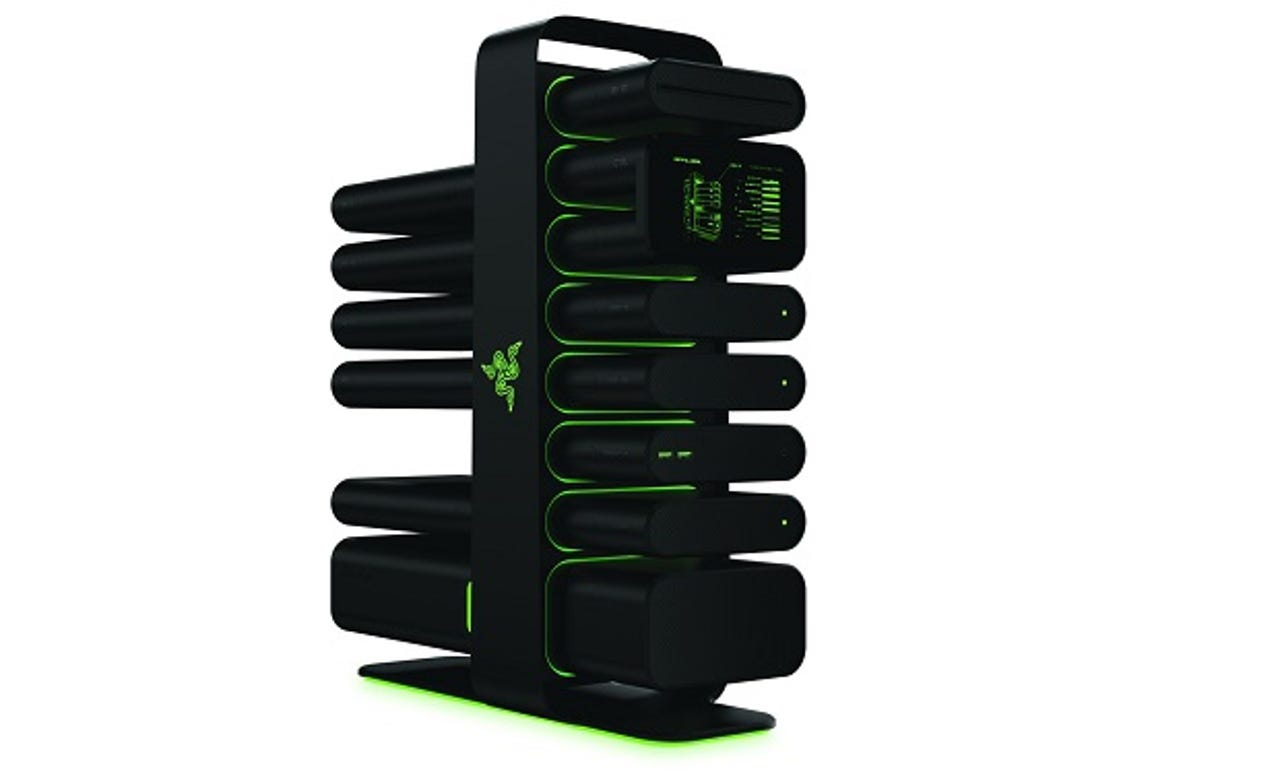CES 2014: Razer's Project Christine concept envisions modular gaming PC


After starting as a mere gaming peripheral company, Razer has become a fount of ideas to invigorate the PC gaming industry. That includes an insanely elaborate concept gaming controller and highly regarded laptops, as well as a gaming-centric Windows 8 tablet. But its latest idea, announced at this year's CES, might be its wildest yet.
CES 2015 Preview
Behold Project Christine, a desktop concept that looks like one of the most out-there computer case ideas we've seen -- and then builds from there. Its striking look is designed for a radical rethinking of how consumers can build their own systems.
DIY builds can be tricky endeavors for newcomers, who not only have to know how to install components correctly, but also deal with the intricacies of a densely packed conventional PC chassis. Project Christine would eliminate a lot of that difficulty by making modular components that are sealed and self-contained. According to Razer, you would essentially place a new graphics card or hard drive into the right slot, and Project Christine's PCI Express architecture would handle the rest.
As if that weren't enough, the company says each modular will feature its own liquid cooling and noise cancelation features, which saves you the bother of installing your own cooling system and allows Razer to overclock the components before shipping them (and yes, Razer would be building these modules). A touchscreen takes up a couple of slots, allowing you to access maintenance info about your system.
The result -- in theory -- is you could continually upgrade your PC without ever needing to replace the main chassis in a manner far easier than with a conventional computer case. And Razer is apparently thinking about how you can perpetually keep Project Christine up to date with the latest components. The company's CEO, Min-Liang Tan, told Engadget during a demo that a subscription plan could be an option, so "[u]sers don't have to worry about a huge bump every time there's new architecture out there."
Of course, because this is a "concept," there's no solid info on anything related to Project Christine -- including if it will ever make it into production. Nonetheless, if it comes to reality, it could make a bold leap in thinking about PC design. Note, however, it's one that isn't completely novel. In fact, the concept is remarkably similar to the one (dubbed Project Blade Runner) that was written about in great length on ZDNet itself nearly three years ago.